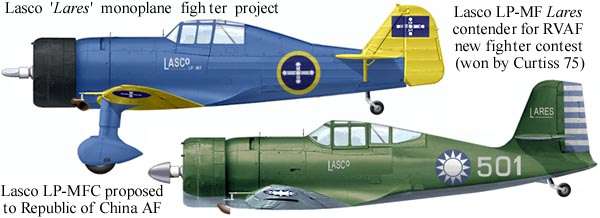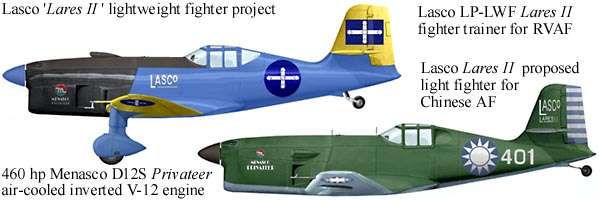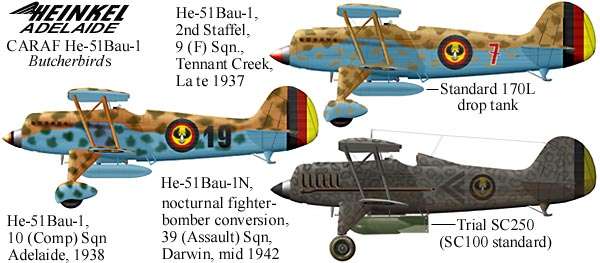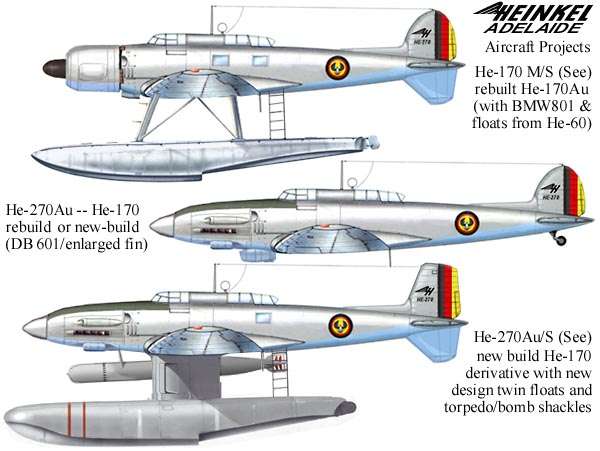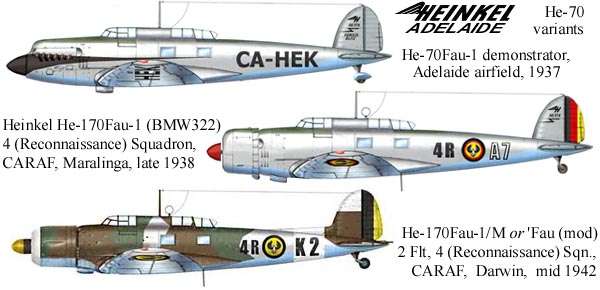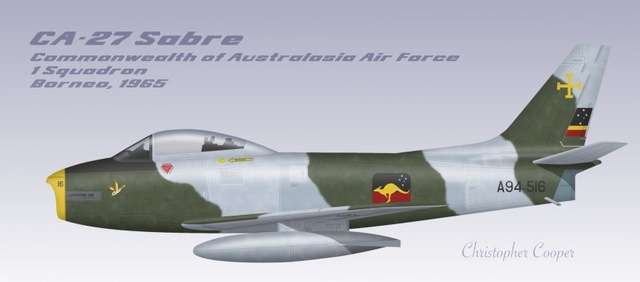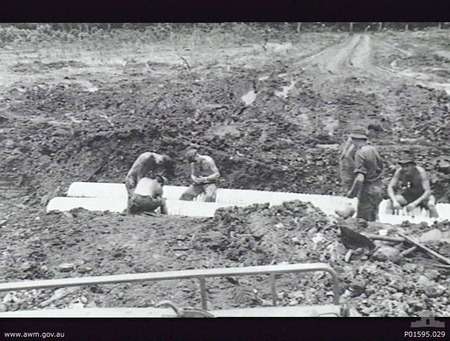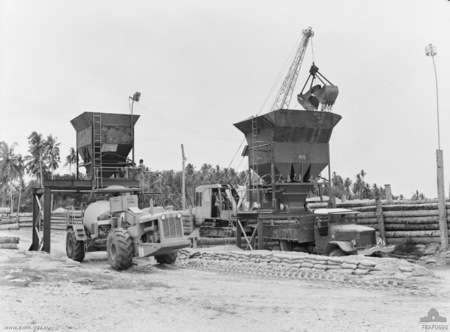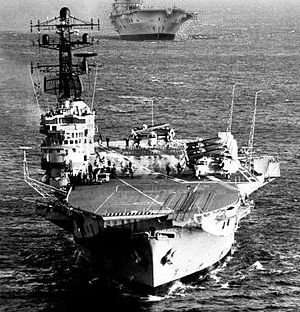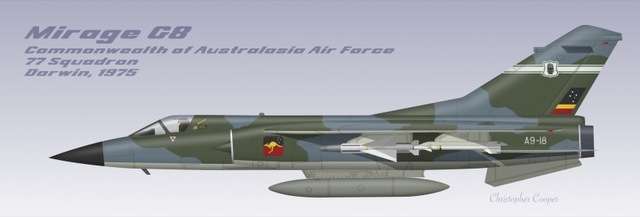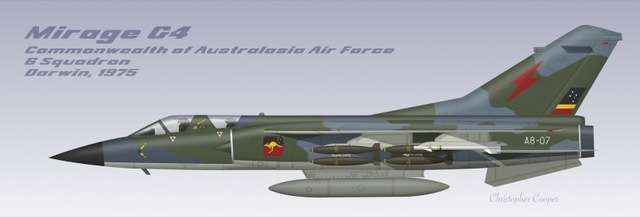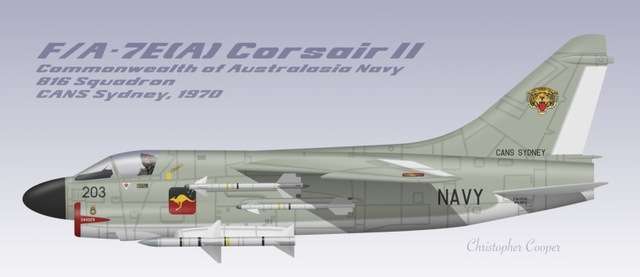Vietnam
Simultaneous to events in Indonesia, the situation in South Vietnam was worsening. The Communist North was increasing its efforts to "liberate" the South. Attacks by insurgents were escalating and the South's Government was still embroiled in crisis after the military coup and assassination of its President, Ngao Diem. The United States which had taken on the role of patron of the South after the French had withdrawn from Indo-China after their defeat at Dien Bien Phu, was growing increasingly worried.
Since the French had left the US had committed increasing numbers of advisors to try and help the ARVN (Army of the Republic of South Vietnam to organise itself to fight against Communist insurgents and rebellious elements around the country. In 1960 a crisis had sprung up in neighbouring Laos with fears of a Communist take over about to occur as a Coup had plunged that small, remote nation into chaos. The result was a three-way conflict as Rightist, "Neutralist" and Communist forces vied for control of the Royal capital, Vientiane. The US Government, fearful of the possibility of a Communist takeover wished to intervene but were advised not to because of the lack of US forces able to used to do so and the inability to supply them in such a remote country. Frustrated, President Kennedy, had to watch as the Soviet Union flew supply flights to the Pathet Lao through China and North Vietnam. While in reality those few flights contributed little of real substance to the Pathet Lao they hardened attitudes in Washington about Indo-China.
Under Kennedy, the US Government attempted to grapple with the complexities and troubles of Indo-China, concentrating primarily on the Republic of South Vietnam, which were perceived both as pivotal and more accessible to that of the other countries of the region. Beset by Communists from within and without, Ngo Diem, its first president was also troubled by various warlords, factions and criminal or religious elements, all seeking to gain control of the country. Diem, increasingly seen as erratic and dictatorial, as well as unpopular was deposed in a coup with the agreement of Kennedy although it is said that Kennedy was horrified when Diem was murdered in the back of an APC.
After President John F. Kennedy's own assassination, President Johnson sent a succession of "fact-finding" missions to Saigon to ascertain the situation on the ground. They reported disarray, internecine in-fighting, lack of will and chaos within the ranks of the South's corrupt political and military elite as a succession of short-lived Juntas and Dictators rapidly assumed and lost government. In 1965, on the heavy urging by the Australasian Government and its own State Department, Washington decided to intervene in South Vietnam. It sought contributions from its Allies. The UK refused outright, knowing it had its hands more than full enough with Confrontation. Australasia, already aware of events in and the rapidly approaching Operation HAMMER was initially reluctant but amidst fears of increasing American disinterest in the defence of Australasia, Broken Hill agreed to commit a battalion of infantry to South Vietnam to help defend it against the increasing Communist aggression there. The 1st Battalion, Australasian Regiment arrived "incountry" in March 1965.
The US committed ground troops. Initially the 173rd Airborne Brigade Combat Team and then other units as they flooded into the country. The Australian battalion was attached to the 173rd, operating around Bien Hoa airbase initially. However the Australian battalion commander was sharply critical of the American style of doing war, seeing it as inappropriate to fighting an elusive Guerrilla enemy and wasteful of casualties. He urged his superiors that a full Brigade would be more suitable, with supporting elements, as the minimum commitment. This would allow the Australians to operate alone without being part of a superior American organisation.
Conscription had been a divisive issue in Australia's past with the Dominion having attempted to introduce it twice in 1916 and 1917 and on both occasions seen the referendum undertaken defeated at the polls. During WWII it had been introduced in the face of the Japanese onslaught in all the Australasian nations and been accepted. Post war, it had been reintroduced but only for service at home and then been abandoned for for economic reasons in the late 1950s. The Army had also, like the armed forces been going through a difficult period of amalgamation and had not felt that the need to train conscripts who did little except mow lawns and paint rocks (or so it seemed) and had advocated an end to the selective service scheme in 1958. In 1964, in the face of the apparently worsening situation in the region and multiple commitments of manpower to the defence of Malaysia and Borneo and because of full employment in the Australasian economy, the Government in Broken Hill decided to reintroduce Conscription for “national service”. As the Official History put it:
In 1964 compulsory National Service for 20-year-old males was introduced under the National Service Act (1964). The selection of conscripts was based on date of birth, and conscripts were obligated to give two years’ continuous full-time service, followed by a further three years on the active reserve list. The full-time service requirement was reduced to eighteen months in 1971.
The Defence Act was amended in May 1965 to provide that National Servicemen could be obliged to serve overseas, a provision that had been applied only once before - during World War II. In March 1966, the Government announced that National Servicemen would be sent to Vietnam to fight in units of the Australian Regular Army and for secondment to American forces.
With the success of Operation HAMMER, the Australian Government feeling more secure agreed to the request from Army and in order to facilitate this made the very controversial decision that Conscripts would be sent overseas. In 1966 the Australians requested their own AO (Area of Operations) and after examining their requirements, decided on Hue Province, in I Corps, near the DMZ. It had the advantage of being a coastal province with its own port (Hue) and a major US base nearby (Da Nang). It had also been one of the least rebellious provinces before the division of Vietnam in 1954 but would be on the main avenue of an conventional southwards by the North's forces. Since then it had been relatively quiet. The US Commander, General Westmoreland was initially reluctant, preferring the Australians to take a province near the Laotian border but was forced to agree when Broken Hill made it clear it wanted to be able to limit its involvement in the war. In reality the Australian Army appreciated the possible dangers of close involvement and that it may if necessary need to evacuate its forces quickly if "another Korea" occurred.
Late 1966 saw the rapid build up of Australian forces in Vung Tau. A Brigade Task Force was established at Vong Canh Hill,outside the city. In addition, the CAAF contributed a light transport squadron and in 1967 a TA-37 light ground attack squadron, a Canberra bomber squadron, a helicopter squadron and the CAN a helicopter flight. The Australian Task Force set to work to pacify Hue, using the experiences of WWII, the Emergency and Confrontation as an example. It however found very quickly that the intensity and scope of operations were much greater than expected. Indeed, the first Australasian Task Force commander remarked later that at the time he feared that the Australasians had, “bitten off more than they could chew” in choosing a province containing a major urban area like the old Imperial Capital of Hue, particularly with its numerous canals and narrow streets.
The Army responded and increased force levels, including dispatching a Squadron of APCs and another of Centurion tanks, as well as other supporting units. By 1968, the Task Force reached a maximum of over 8000 personnel on the ground. During 1968, the “Tet Offensive” resulted in a massive battle in and around Hue. The Australasian Task Force found itself intensively engaged for the first time in its history in street fighting and the tanks of B Squadron 1 Armd Regt. proved invaluable in destroying strong points with their direct fire capabilities. However, the Regiment suffered appreciably greater casualties as the PAVN and NLF fire invariably concentrated on them in the close confines of the streets of Hue. Working closely with ARVN and US units, particularly Marines, the battalions of the Task Force drove through the city against strong opposition from the PAVN and NLF forces opposing them until they reached the old Imperial Palace. Political considerations forced the Australians to then take up a supporting role while the ARVN units actually assaulted and took the Palace citadel. This was the high point of the Australian involvement. The intensity of the fighting was so great and the CA Government's sensitivity to casualties so high that it became alarmed and operations began to wind down after the end of 1968.
While primarily an "infantryman's war" the CAAF and CAN made valuable contributions. Known as "Wallaby Airlines", 35 Squadron's Caribou transport aircraft in particular were used extensively and suffered a single loss, both to ground fire. 2 Squadron's Canberras also suffered a loss, to a SAM fired from North Vietnam, over Northern South Vietnam in 1968. 4 Squadron, because of its mission of ground attack however suffered the greatest losses, losing three TA-37s, all to ground fire. 4 Squadron's TA-37s were particularly appreciated by the Australian ground troops which found its attacks were invariably more accurate and better placed than most American ones.
However, the Tet Offensive of 1968 had been a wake up call to all concerned that a purely military solution was not going to solve the situation. The United States, under its new President Nixon, sought to break the deadlock by reaching out to China in the belief that by splintering the Communist "Bloc'" the war in Vietnam would be shortened, failing to understand that it was the Soviet Union, not China which was the principle patron of North Vietnam. His efforts at "Ping-Pong Diplomacy" saw the historic visit by the first US President to Beijing on 21-28 February 1972. While this decreased the amount of supplies which were reaching North Vietnam to a certain extent, the USSR stepped up efforts to replace it by sending increasing numbers of ships.
Broken Hill, caught on the hop suddenly found itself in the invidious position of having much more aggressive rhetoric still directed towards Beijing than its patron did. Once again it was forced to suffer an embarrassing situation and back down. However it was obvious that the writing was on the wall. While the US using the example of Operation HAMMER mounted over Christmas 1972 a massive air campaign against North Vietnam, which included the mining of North Vietnamese harbours, in an effort to force it back to the negotiating table when talks stalled in Paris. The plan worked and President Nixon was able to declare "Peace with honour!" upon the signing of a ceasefire in 1973. When the US announced plans for troop reductions in South Vietnam in 1969, Broken Hill quickly followed suit. By 1972, all Australian combat troops and aircraft were withdrawn. Only some advisors remained.
1972 saw the North mount an attempt to force the South to surrender with a massive, conventional ground attack across the DMZ. The USAF however intervened and stopped it in its tracks. Obviously the Northern command had over-reached itself and paid the penalty. By 1975 though, Americans had lost interest in Vietnam and the North again made an attempt to grab Saigon which succeeded beyond their wildest dreams and is now considered one of the modern classics of operational manoeuvre warfare. Saigon fell on 30 April 1975. American advisors, CIA agents, private military contractors, and anybody else who feared a Communist success were seen being bundled ignominiously onto helicopters and planes and fleeing South Vietnam. The Communist bloc' was enheartened by the spectacular way in which South Vietnam finally fell and the 1970s ended with several notable encroachments by the Communists around the world.
At home, the war had been a period of tumult. Australian society had reacted badly to the decision in 1966 to commit conscripts to the war. Conscription's past history of division had reasserted itself. The result was increasing reaction against the war itself as well. By 1970, massive street demonstrations forced the Australian government to reconsider its involvement in the war and were partly to contribute to the decision to withdraw. In the end, Australasia was to suffer over 500 dead and about three times that number in casualties. Six were MIA (Missing in Action) but all were presumed dead because of the circumstances under which they had disappeared. Their remains were eventually all recovered by 2010.
As a result of this period with its commitments to Asia, the Australasian Armed Forces developed a strategy which became known as “Forward Defence”. The justification was that it was better to fight the rampaging Communist (Asian) hordes “over there” rather than “here”. As the government became more interventionary and with each crises and conflict, the strategy was reinforced. Coupled with a aggressive, primarily anti-Communist focused rhetoric, a succession of Liberal-Country Party coalition governments sought to maintain American interest in the region. It believed that by paying an “insurance premium” in blood, it could ensure that the American defence guarantee would be maintained.
It was against this background of instability that the CAA's armed forces undertook the following rearmament programmes in the 1960s:
Commonwealth of Australasia Air Force
CA27 & CA28 Avon-Sabre Replacement Programme
As the 1950s drew to a close the next project was finding a replacement fighter for the CAAF. The world of aeronautics had moved on appreciably in the short time since the CA27 and CA28. Aircraft were now expected to be capable of supersonic flight, often at twice the speed of sound, armed with guided missiles and be able to find and destroy their opponents in all weathers.
When the news came in 1961 that the CA27 was to be replaced by a Mach 2 capable fighter, the competitors were announced to be the American Lockheed F-104 Starfighter. the British English Electric Lightning, the French Dassault Mirage III and the CAR's Ho-200
Jowok (Aboriginal for "Stormbird"). The Ho-200, another design from Kurt Tank and his team of ex-Focke Wulf engineers was a large, twin-engined swept-wing supersonic fighter, armed with 4 30mm ADEN cannons and IR air-to-air missiles. The prototype, powered by 2 Bristol-Siddeley Orpheus Mk 703 after-burning turbojets, each developing 6,275 lb dry and 10,582 lb with reheat, the Ho-200 was able to just reach Mach 1. However, better performance was promised once more powerful engines, such as the Rolls-Royce Avon 67 engine with thrust of 16,000 lb with reheat were installed.
The F-104 was generally considered the favourite because of American aid policies (and as we know now, outright bribery by Lockheed in many of the deals done to adopt it overseas). However, Wackett again intervened. He proposed a variant of the Dassault Mirage, utilising the Rolls-Royce Avon engine. Offering better thrust and fuel economy. After some debate, the winner of the competition was announced as the Avon engined Mirage IIIO. Built largely by CAC, the Mirage IIIO provided sterling service to the CAAF until the early 1980s. The
Jowok was abandoned. Tank, in disappointment took up a position in India with Hindustani Aeronautics, taking the design with him. There, it was produced as the HF-24 Murat. However, it never received the more powerful engines and so never fully realised its full potential.
Holdens at this point decided to abandon aircraft and jet engine manufacture. This fitted well with the then Commonwealth Government's plans about industrial rationalisation. Whereas there had been five major and several smaller aircraft manufacturers at the start of WWII, post war there was really only three major ones – GAF, CAC and Holdens. Now there just two.
Canberra replacement
In 1963 the CAAF created an Air Staff Requirement for a strike aircraft to supersede the Canberra, which in the light of aerodynamic and air-defence developments was starting to look decidedly past its use-by-date. Manufacturers were invited to tender and the competition is between the A-5 Vigilante, TSR.2, Mirage IV and F-111. Unfortunately, because of doubts about cost, TSR.2 was cancelled by the UK Government and F-111K adopted instead. US armed services in an orgy of backstabbing and internecine strife decided that the "common" F-111 was impossible and so it was cancelled, leaving the RAF and other potential customers in the lurch. The A-5 Vigilante was considered unable to fulfill the requirements as far as performance and was too heavily optimised as a naval and a nuclear delivery aircraft. It was anyway, out of production. Dassault offered the Mirage IV. Blackburn offered the Buccaneer which the RAF had been forced to adopt to replace both the TSR.2 and the F-111K. Both Mirage IV and Buccaneer did not meet requirements, both lacking adequate performance and warload. The CAAF dithered for several years, looking for alternatives. Dassault in 1967 offered the Mirage G, the newest aircraft on their books. Blackburn, now Hawker-Siddely countered with the P.150 Buccaneer development. The Mirage G was perceived as the lower risk, because of French Airforce interest in the project whereas the UK's forces - the RAF and RN FAA had little in the P.150. In September 1968, RAAF Squadron Leader Fisher made another four-flight evaluation of the Mirage G. His first flight was the aircraft's 200th flight. Squadron Leader Fisher reported very favourably on the aircraft and its potential.
The French government. under the urging of Dassault who scented the possibility of a sale cancelled its order for the Mirage G in November 1968 in favour of the Mirage G4 strike variant more tailored to CAAF requirements.
According to the official Dassault brochure:
The Mirage G4 is a twin-engined variable geometry aircraft, with capability for hi-lo-hi, short take-off and landing. Sweep angles that varies between 23° and 70° like the Mirage G from which it is derived, maximum speed is set to be higher than Mach 2. Range is over 3,000 km. Armament consists of two IR AA missiles and two guns (optional) and seven hard points (two per wing and three under the central fuselage) for air-to-surface bombs or missiles. The aircraft is also equipped with a vertical panoramic camera and a radar in the nose. The engines are the SNECMA 9k50, rated each at 7,200 kg of thrust, mounted side-by-side and fed from integral fuel tanks in the fuselage.
The Mirage G4 is a two seat aircraft, of entirely metallic monocoque construction, with high lift devices such as leading and trailing edge flaps. It had a swept rudder and both horizontal stabilisers were differentially controlled. The side air intakes were fitted with moving shock cones enabling high speed flight.
CAAF delighted with the possibility of gaining an aircraft tailored more closely to their Staff Requirements bought 24 G4 and followed with an order for 12 of the G8 version as a "heavy fighter" to escort the strike version to the target and back.
The combination was to prove particularly popular and quite capable. Both aircraft were upgraded during their service lives having additional systems and weapons integrated into them.
Commonwealth of Australasia Navy (CAN)
A-4 Skyhawk
The CAN also found itself with two very different fighter-bombers on its carriers, the Hawker Seahawk and the McDonnell-Douglas Banshee. Both were rapidly becoming obsolescent. Both carriers were too small to operate the new Mach 1+ fighters entering service overseas. One aircraft however stood out for its small size and its high performance – the Mcdonnell-Douglas A4D Skyhawk. It appeared ideal for the CAN's needs so the decision was made to standardise on the A4D Skyhawk in 1962.
CA28 Sea Dingo replacement
The CAN started looking for a replacement for the CA28 Sea Dingo in mid 1966 which in the face of improving aerodynamic advances it was already starting to look quite dated in its performance only six years after being adopted. Its three carriers, SYDNEY, MELBOURNE and LEVIATHAN were all too small to operate the latest Mach 2+ capable fighters. When an invitation to tender was issued by the CAN in 1968, only SEPECAT, LTV and McDonnell-Douglas offered aircraft. SEPECAT with the Jaguar MO ("Marine Ostralien") a variant of the standard Jaguar M with a radar and with uprated engines, limited air-to-air capabilities, LTV offered a simplied F-8 Crusader variant, the F/A-7 Corsair II with upgrades to provide air-to-air capabilities, McDonnell-Douglas offered two designs, an upgraded A-4 Skyhawk with radar and limited air-to-air capability, using an American turbojet and an improved version which utilised a Rolls-Royce Spey turbofan which while of a similar configuration was slightly larger and in this variant featured full radar and air-to-air capabilities with BVR missiles.
After consideration, the F/A-7E(A) Corsair II was chosen, which had a blown wing and a slightly longer nose with a larger, more powerful radar, as well as being able to carry two Sparrow BVR missiles on the fuselage lower corners. This design brought the A-7 almost full circle back to its F-8 roots and in turn was adopted also by the French Aeronavale as well when they were seeking a new carrier based fighter. The McDonnell-Douglas designs and the Jaguar were rejected on the grounds of being either too expensive and undeveloped or of insufficient improvement over the existing A-4 Skyhawks already in service. The F/A-7E(A) entered service in 1969.
Carrier Matters
In the late 1950s, it was obvious that SYDNEY was entering obsolescence. The first of the MAJESTIC class commissioned by an Antipodean navy, she had been completed before sale with a straight deck and it was found to be difficult to operate jets from her, once MELBOURNE and LEVIATHAN arrived on the scene with their complements of jet aircraft. SYDNEY however found a new lease of life as an ASW Carrier where carrying first propeller-powered fixed-wing ASW aircraft and then later helicopters which weren't as demanding as jets. Fireflys, then Gannets and then Wessex helicopters operated from her straight through deck. However by 1959, the worsening international situation with regard to Indonesian intentions in the region meant that the emphasis for the CAN had started to change. Throughout the 1940s and 1950s the various antipodean navies had, had an emphasis on being part of one or another "big power" Navy's Task Forces. SYDNEY as an ASW carrier had fitted into that scheme well. Now that the emphasis had started to change to a much more independent stance in the light of the events of 1960 and the potentially explosive West New Guinea dispute with Indonesia, there was now a greater need for strike aircraft and fleet protection and other ships were being handed the ASW roll, which they were better suited to. The CAN therefore took the decision in 1963 to modernise SYDNEY. She was to be fitted with an angled flight deck, a mirrored landing system and more powerful catapults. That would in turn require the fitting of more modern machinery, particularly boilers, which would help rejuvenate the old carrier even further. With the addition of the newest radars and surface-to-air missile systems, she would become a more modern and powerful version of MELBOURNE and LEVIATHAN.
As part of the rationalisation process it was decided that the CAN would standardise on aircraft of only one type for each mission. For the naval fighter, the CA28 Sea Dingo was chosen. For the strike role, the A-4 Skyhawk. For the ASW and AEW missions, the Gannet was chosen. Where there were insufficient of a type to equip a carrier, more were purchased and excess of the other types disposed of.
After a process that lasted four years, SYDNEY emerged from the dockyard looking like an old maid who had just got her first invitation to a ball and done herself up to the nines. Fitted with Type 988 Anglo-Dutch 3D radar and Seacat SAMs, she was now able to operate CA28 Sea Dingos, A-4 Skyhawks and Gannets, as well as Helicopters.






















